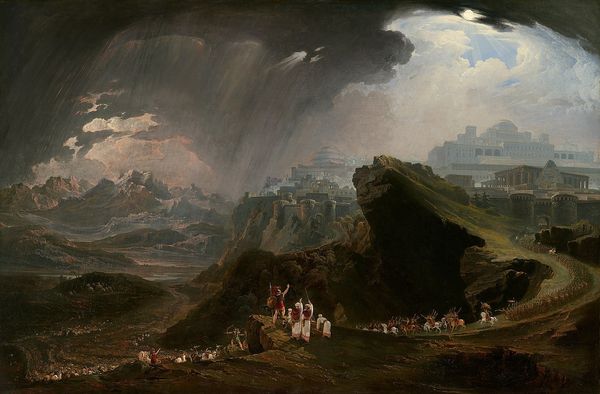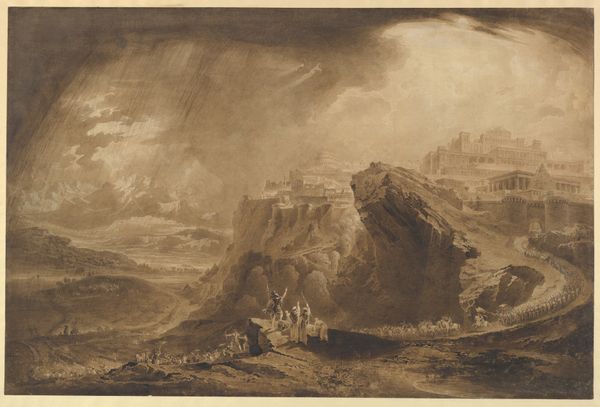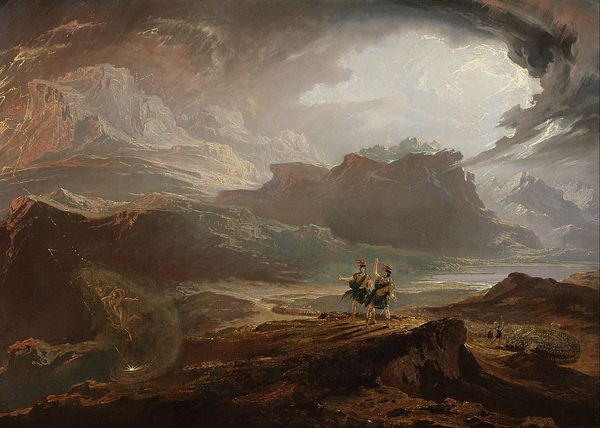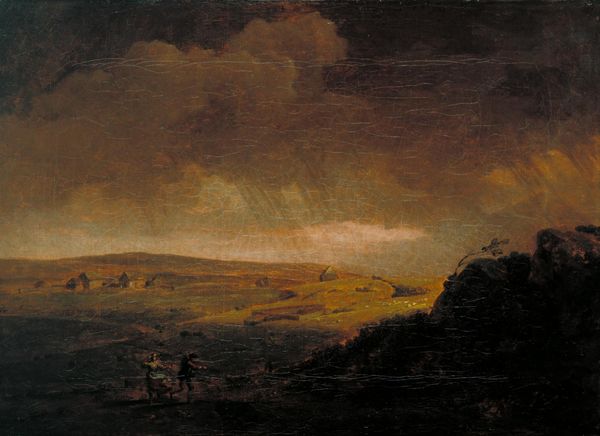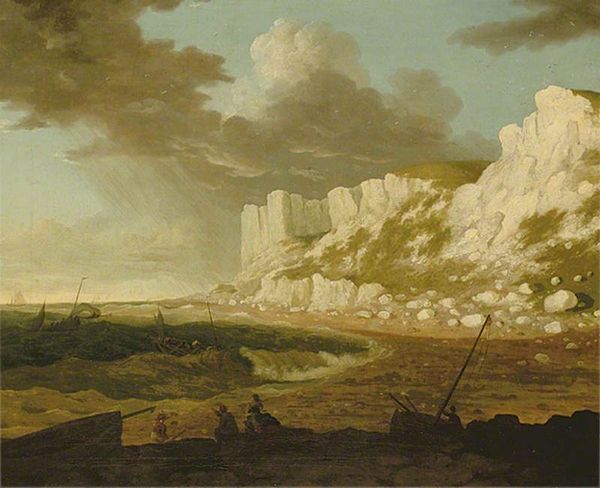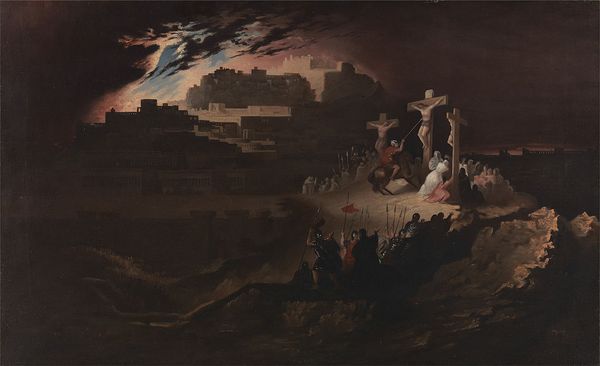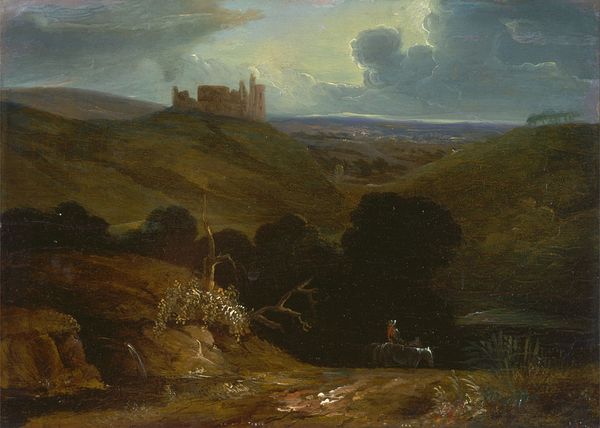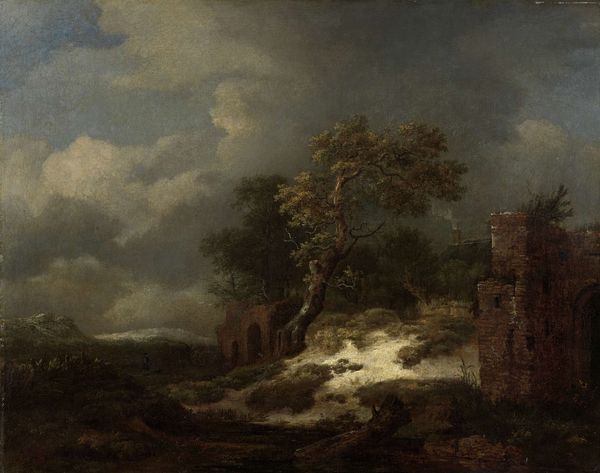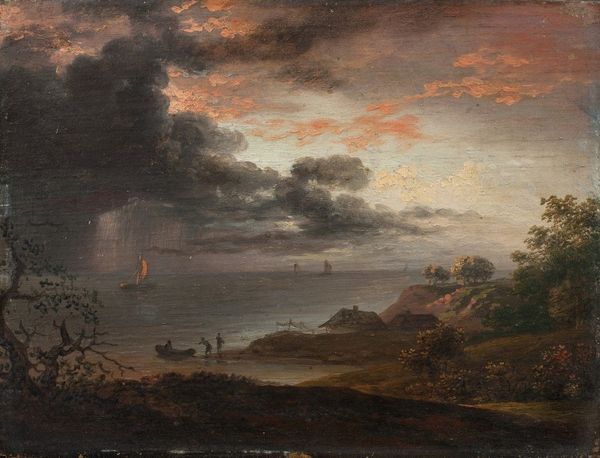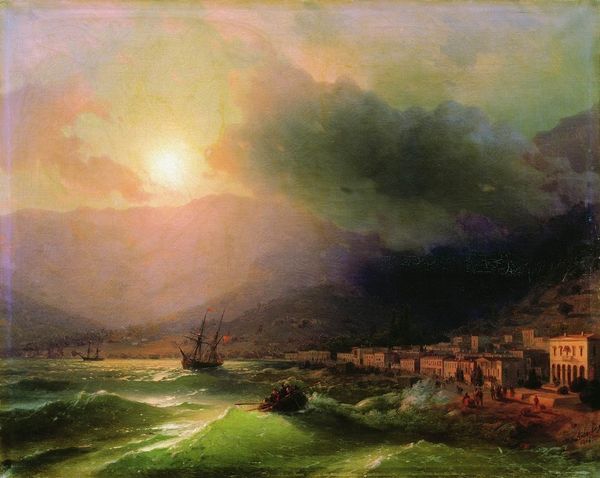
oil-paint
#
sky
#
fantasy concept art
#
fantasy art
#
oil-paint
#
landscape
#
figuration
#
oil painting
#
romanticism
#
history-painting
#
sublime
Copyright: Public domain
Curator: This is John Martin's "Joshua Commanding the Sun to Stand Still," completed in 1840. Look closely at the way he's used oil paint to depict not just a landscape, but an entire moment pregnant with divine intervention. Editor: Wow. Immediately, I’m struck by the sheer drama. It’s oppressive and yet undeniably captivating. The composition feels almost deliberately chaotic, that contrast between the darkness on the left, versus the celestial light piercing through on the right. Curator: Indeed, it's all about conveying a sense of the sublime, of something so powerful it overwhelms the senses. Martin was deeply interested in religious narratives, and he often portrayed them with this epic scale and dramatic use of light and shadow. The frozen sun itself becomes a symbol, doesn't it? Representing absolute power, the halting of time itself. Editor: Absolutely. But it's also deeply problematic. To freeze time, as the title suggests, to stop progress, is it not a celebration of stagnation? Given the religious and historical context of the narrative, the figures witnessing this spectacle, who are *they*? It seems almost like Martin celebrates dominion rather than justice. Curator: It's definitely a loaded image! Remember, too, the period in which this was painted: the rise of industrialization, of massive societal change. The romantic artists, including Martin, saw a connection between grand narratives of the past, and their concerns with the present, especially their longing to reassert historical notions of Christian dominance. The sun standing still, maybe he interpreted that as a call to arrest all progress, as you suggest? Editor: Maybe. Or perhaps he yearned for some sort of moral order? I would say, this feels more about cultural anxiety than some pious demonstration. Curator: I think that tension between awe and fear is crucial. Martin forces the viewer to grapple with forces far bigger than themselves, just as religion often positions itself within the wider political sphere. Editor: Exactly, this piece certainly doesn't give easy answers, and that in itself, is quite intriguing, I think. It's so easy to see images, and to assume to grasp its value immediately. But even works created with a kind of backward-facing sentiment, must speak to our time. Curator: Precisely! Let's leave our listeners with that paradox to ponder further. It's a painting that resonates long after you've turned away from it.
Comments
No comments
Be the first to comment and join the conversation on the ultimate creative platform.
